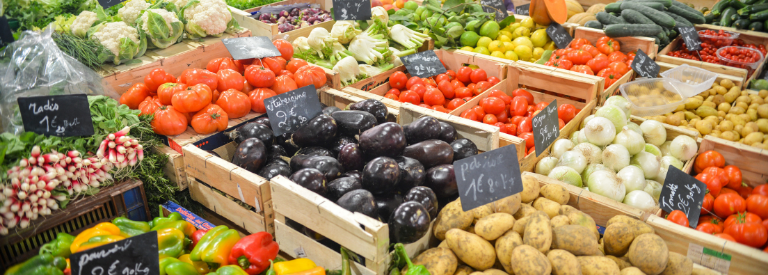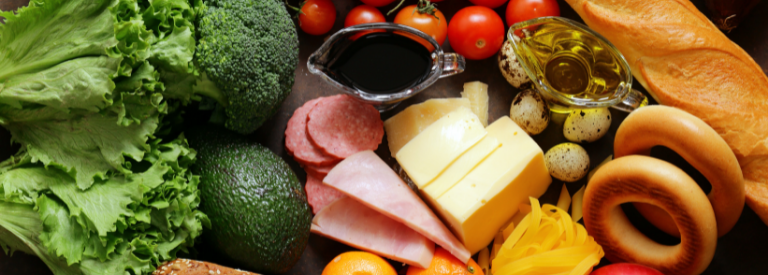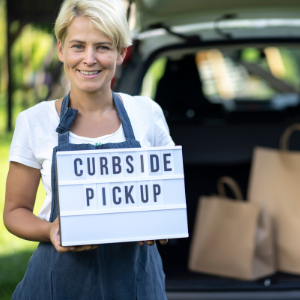With many restaurants across the country forced to shut down their dine-in services due to COVID-19, business owners are looking for ways to stay afloat. While the majority of establishments are offering customers prepared meals for curbside pickup and delivery, restaurant owners are learning that this business model isn’t sustainable.
To generate additional revenue during the pandemic, establishments nationwide are also transforming their businesses into independent grocery stores. Business owners have realized that grocery stores cannot keep up with the high demand for grocery items or food shortages which is why many independent restaurants and franchises have begun offering customers grocery products. With many foodservice establishments having early success offering grocery staples, it's an excellent idea for your business to take the initiative and do the same. If you're not sure where your restaurant should begin, here's a breakdown of how you can successfully sell groceries in your establishment today!
How Can Establishments Purchase Groceries?
There has been a surge in demand for basic essentials due to the virus which has led to perpetually empty shelves in many grocery stores. While grocery markets are having difficulties restocking shelves, many restaurants have easy access to a lot of the grocery items shoppers need. That is because the majority of establishments have different food suppliers than grocery stores.
To purchase grocery items, simply talk to your food vendors. Create a
list of grocery items you’d like to offer customers and ask your
suppliers if they have them in stock. Your vendors will likely have the
majority of products you need because restaurants have been ordering
fewer ingredients and produce.
Which Grocery Items Should Restaurants Offer Customers?
When deciding which supplies to purchase from vendors, it’s important to put yourself in the customers’ shoes. Think about the supplies they need to prepare meals and live comfortably on a daily basis. You should also find out which products are difficult to purchase at grocery markets because the demand is extremely high for them.
Once you’ve done your research, stock up on those products. Those supplies will likely sell quickly because your business will be one of the few locations with those items. The following list includes a number of grocery products that foodservice establishments nationwide are offering:
- Produce
- Eggs
- Cheese
- Milk
- Juice
- Meat
- Chicken
- Seafood
- Bread
- Flour
- Spices
- Butter
- Rice
- Dry pasta
- Toilet paper
-
Paper towels

How Should Establishments Package Groceries?
When restaurants order products from food vendors, they typically arrive in massive quantities because restaurants are constantly prepping food for customers. However, a family of 4 will likely not purchase a 50-pound bag of flour or a 20-pound bag of dry pasta because they don’t cook as often. This means your restaurant needs to find a way to package bulk supplies into smaller, individual bundles for your customers.
To package products for customers, you can use disposable take out containers, zip bags, and other supplies that you regularly receive from vendors. It allows you to utilize the supplies you have in your establishment without making additional purchases.
How Should Restaurants Give Customers Their Grocery Orders?
To prevent the spread of COVID-19, it’s crucial for your employees to give customers their orders with minimal contact. While it may be challenging because you’re accustomed to patrons coming inside your business to pick up their meals, there are a couple of ways to minimize face-to-face interactions with customers.
Contactless Delivery
Many restaurants are relying less on third-party services to save on costs and delivering food themselves. In order to reduce the risk of their employees becoming infected with the virus, establishments are implementing contactless delivery. This delivery method eliminates contact between delivery drivers and customers to keep everyone safe.
When customers place an order online or over the phone, ask them where they’d like their food to be dropped off. Many times, customers will request orders to be dropped off at their front door. Once you’ve delivered an order, it’s important to notify the customer so their food doesn’t spoil. You can simply call or text the client to let them know that their order has been delivered.
Curbside Pickup
 There are many patrons that prefer to pick up their orders
themselves at your establishment. However, instead of having customers
walk inside your restaurant to pick up their orders, offer curbside
pickup. This pickup method requires customers to park at one of the
restaurant’s designated curbside pickup parking spots to safely receive
their orders.
There are many patrons that prefer to pick up their orders
themselves at your establishment. However, instead of having customers
walk inside your restaurant to pick up their orders, offer curbside
pickup. This pickup method requires customers to park at one of the
restaurant’s designated curbside pickup parking spots to safely receive
their orders.
When patrons place an order for curbside pickup, inform them where you’d like them to park and the best way to notify you when they’ve arrived. This will prevent any confusion to streamline the curbside pickup process.
Once patrons inform you that they’ve arrived, take their orders to them. They will either request for you to place it in their trunk or to hand it to them. When handing out orders, it’s important to wear face masks and gloves to keep your employees and customers safe.
How Can Establishments Promote Their New Business Model?
Once everything is set, it’s time to let locals know about your new grocery delivery service. Create social media posts informing customers of your new business model. You can do this by uploading your grocery item menu, photos showcasing products that are for sale, and explaining how your business is taking extra precautions to prevent the spread of COVID-19.
It’s also essential to advertise the new online grocery store on your establishment’s website. Your website should answer all the questions customers may have about your new business model to make it easy for patrons to order groceries online. Include information about the menu, prices, specials, hours of operation, and how customers can receive their orders.
Time To Get Started!
As restaurants continue to lose dine-in business due to COVID-19, it's essential your establishment finds innovative solutions to stay afloat. With the demand for groceries constantly increasing, turning your restaurant into an independent grocery service is an excellent way to make a profit and provide work for your employees. By following this guide, you’ll be able to successfully sell groceries while keeping your customers and staff members safe.








